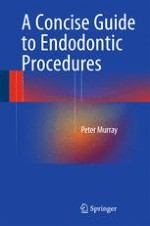2015 | Boek
Over dit boek
This clinical guide is a concise up-to-date resource that covers a wide range of endodontic procedures, including non-surgical root canal therapy, surgical root canal therapy, trauma care and the management of fractured teeth, apexification, apexogenesis, revascularization, regeneration, Cvek partial pulpotomy, root canal retreatment, and periapical surgery. The provision of numerous flowcharts, checklists, and advice on error avoidance for each procedure will assist in decision-making in daily practice. Scientific and clinical evidence regarding the use and efficacy of the different forms of treatment is summarized, and helpful information is also presented on instrumentation. The inclusion of exam questions will assist those preparing for endodontic examinations. A Primer on Endodontic Treatment will be of value for dental students, residents in training to become endodontists, endodontists, pediatric dentists, and established dentists.
